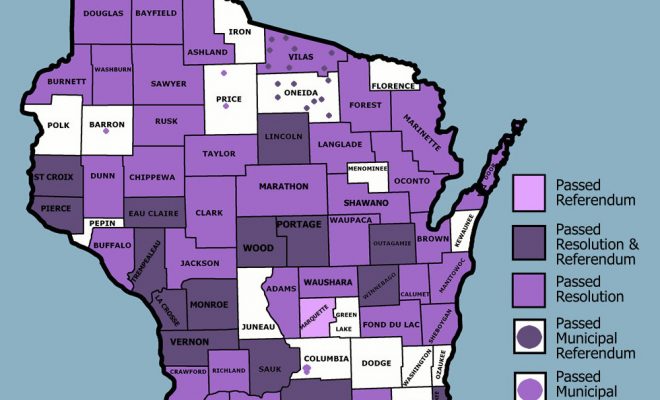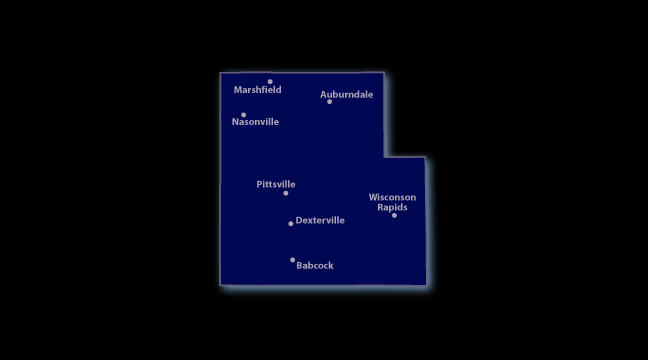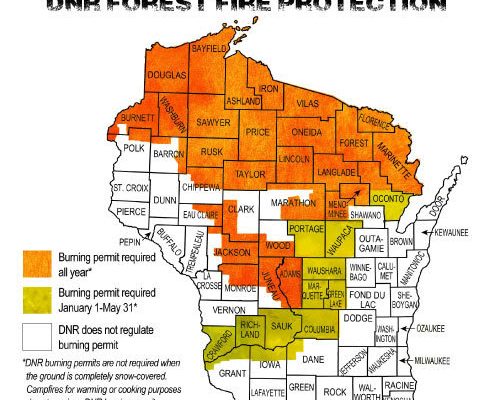Redistricting in Wisconsin

By Kris Leonhardt
CENTRAL WISCONSIN – The state of Wisconsin must redraw its political districts, on both a state and local level, every 10 years following the U.S. Census. While all states in the nation must adhere to the procedure, Wisconsin presents its own unique dynamics in this matter, while pressing for a nonpartisan means to address the map generation.
“It is essentially required by the constitution,” said UWSP Political Science Professor Emeritus Ed Miller, “very explicitly in terms of the House of Representatives. In terms of the state legislature, it is essentially interpretation of the 14th Amendment – equal protection of the law. So, the Supreme Court ruled that districts must be equal in population, not one person one vote, that has never been the case although people keep saying it; because, children are counted, immigrants are counted who are not naturalized. It’s equal population. The Supreme Court ruled on that in the early 1960s.”
How it works
“The states are informed by the Census Bureau how many representatives in the House of Representatives they will have; so, some states will lose some and some states will gain some,” Miller explained. “The estimate is that Wisconsin will not this time, but over a period of years since I’ve been here we’ve actually lost two seats in the House of Representatives; not because we lost population, our population has been gaining in Wisconsin slowly. But, it has been gaining slower than other states.”
Miller said that while Texas and Florida are expected to gain seats, California is expected to lose one.
After the Census is out, then the states can do redistricting.
Where the issues lie
“Wisconsin had a law and the law in Wisconsin was that the local governments had to do their own redistricting of their council districts first before the state did it and that was repealed under Governor (Scott) Walker. The reason it was repealed was there were recall elections, not only for the governor, but some members of the Senate,” Miller recalled.
“Republicans feared that if they waited until all of the local governments did their redistricting, which is around early September, that it would lose one house of the Legislature. So, they did it early. The state of Wisconsin did it early. They actually did lose one house of the Legislature, but they did it and the governor signed the redistricting at the same time as he signed the repeal of that law.
“But in most years going back to the 30s, Wisconsin’s Legislature has not been able to do a redistricting, and in Wisconsin, the governor has to sign it. The governor could be a different party than a majority of the Legislature. So, what’s happened is its wound up in the court and the court has done redistricting.”
In 2000, it went to the Supreme Court of Wisconsin, who said they didn’t have the mechanism to redistrict. It then went to the federal court in Milwaukee, and a three-judge panel did the redistricting, which was later opposed.
In 2010, the redistricting was completed by a private law firm.
“Normally it is done by the legislature and the minority party is given some money and so forth, and it is done with the technical service bureau in the Legislature,” Miller explained. “And, they created a very gerrymandered district.”
Gerrymander is a term originated from Elbridge Gerry, a Massachusetts governor, who drew a district that looked like a salamander. The term is used to refer to the manipulation of electoral constituency boundaries to achieve a specific result.
What is to come
“When the figures do come out, which will be a little bit later than normal this year, the legislature, which is still controlled by Republicans, are going to do a Republican redistricting. Most notably, the governor is going to veto it,” Miller stated.
“Then, it essentially goes to the court. So, what they want is want it to go to the Wisconsin Supreme Court, which does not have a mechanism what-so-ever to do this.
“They want it to start directly with the Wisconsin Supreme Court, not going through the federal court and not going through the lower courts in Wisconsin. The conservatives have filed a petition for the Supreme Court to write a rule that that is what would happen. It would be written prior to any redistricting.”
A hearing was held on the matter on Jan. 14 and the state Supreme Court will discuss the proposal privately and issue a decision.
Miller says that other states, such as Iowa, have an independent commission to address redistricting, and some have recently created them through democratic means.
“You can’t get it on the ballot in Wisconsin, unlike some other states. We don’t have what is called the ‘initiative.’ In California and Colorado, people got up a petition and they had the requisite number of signatures and it got on the ballot. And, people voted to create this commission. In California and Colorado, the people did it. Wisconsin does not have that direct democracy. As a matter of fact, it was turned down in the Constitutional amendment back in the 30s,” Miller explained.
“We don’t have it in Wisconsin and people want it,
Central Wisconsin Support
That support for a nonpartisan procedure was evident in the advisory referendums held in Portage and Wood counties.
When asked “Should the Wisconsin legislature create a nonpartisan procedure for the preparation of legislative and congressional district plans and maps?”
Portage County voters supported it 13,676-4,575, while Wood County voters responded with a 14,077-5,367 vote.
While Marathon County did not place a referendum on the ballot, the board narrowly passed a resolution in July, with a 19-17 vote supporting a nonpartisan redistricting process for the state’s legislative and Congressional maps.
The three counties are a part of 55 counties that have shown some form of backing – referendum and/or resolution – for a nonpartisan form of redistricting.






